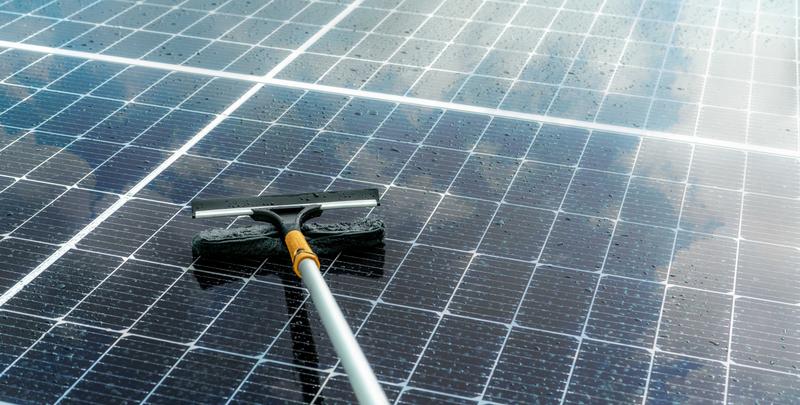
For those who’re seeking a higher-efficiency
Why Photo voltaic Panel Cleansing Matters
Photo voltaic panels seize Strength at their greatest when thoroughly clean. Dust, pollen, hen droppings, and smog cut down effectiveness—often by 20% or maybe more. Typical cleansing will help preserve optimal general performance, prolong panel existence, and shield your investment.
Most important Positive aspects:
- Improved Electricity output
- Reduced electricity costs
- Extended panel lifespan
- Minimized danger of micro‑cracks resulting from thermal hotspots
Forms of Photo voltaic Cleaning Instruments
Selecting the suitable Instrument relies on your setup, drinking water availability, and wished-for usefulness. Types include:
- Drinking water‑run photo voltaic brush methods
- Moveable photo voltaic panel cleaning kit bundles
- Pure water cleaning devices
- Rotary photo voltaic brushes and extension poles
Water Powered Solar Brush Programs
These brushes hook up with a h2o resource and spin whilst dispensing water, combining cleaning and lubrication in one stage. The end result: spotless panels devoid of scratching.
Critical Characteristics:
- Built-in drinking water feed from the brush head
- Comfortable bristles Safe and sound for glass surfaces
- Rotary movement lessens manual effort
- Mounts on extension poles for rooftop obtain
Portable Photo voltaic Panel Cleansing Kit
A whole solar panel cleaning kit ordinarily involves:
- Brush head (fixed or rotating)
- Extension pole (adjustable lengths approximately 6 m)
- Hose adapters or speedy‑connect fittings
- Pure‑drinking water tank or filtration system
- Delicate microfiber towels or squeegees
- Non‑abrasive cleaning Resolution (if permitted)
Great things about All-in-One Kits:
- Start off cleaning with small set up
- Compact for storage or travel
- Compatible with household or professional photo voltaic arrays
Pure Water Photo voltaic Cleansing Methods
These programs purify regional drinking water—eliminating minerals and dirt—so it received’t depart scale or streaks. Pure drinking water empowers Qualified-grade benefits with no substances.
How It Works:
- Pretreatment filtration (sediment, carbon, ion Trade)
- Last deionization or reverse‑osmosis phase
- Filtered drinking water circulated through brush for cleansing
- Residue‑cost-free drying—no spots or streaks still left driving
Rotary Solar Brush & Extension Poles
For big photo voltaic arrays or industrial use, an influence-rotating head on a telescoping extension pole can make cleansing efficient and Protected.
Rewards:
- Fewer Bodily energy, quicker protection
- Get to roofs and floor‑mounted panels easily
- Adjustable shaft lengths for varying angles
- Common swift‑link strategies for add-ons
Target Safety & Best Practices
Cleaning solar panels involves heights and slippery surfaces—security first:
- Use non‑conductive extension poles
- Stay clear of strain washers that will crack glass
- Get the job done early or late to avoid glare and heat
- Wear grips and slip-resistant sneakers
- Notice neighborhood h2o‑use guidelines or constraints
Step‑by‑Phase Cleansing Schedule
- Transform from the photo voltaic inverter or ensure method is deactivated
- Rinse panels with very low‑force drinking water
- Make use of a brush (or photo voltaic brush package) with h2o feed
- Scrub gently in overlapping, linear passes
- Rinse completely with clean up water
- Dry with microfiber squeegee or comfortable towel—provided that needed
Selecting the Proper Solar Panel Cleaning Resource
Consider your set up and also your water obtain:
Water powered solar brush
Servicing & Care Guidelines
- Flush hose and brush immediately after each use
- Retail store dry, clean, and away from UV publicity
- Replace worn brush heads—and Verify bristle softness
- Inspect seals and connectors for leaks
- Replace or clean up filters in pure‑drinking water programs routinely
Eco-Pleasant Cleansing Added benefits
Right cleaning prolongs photo voltaic panel efficiency and reduces Electrical power waste. Using drinking water on your own—without the need of soaps or chemicals—aids protect community ecology and avoids runoff air pollution.
How Photo voltaic Panel Cleansing Impacts ROI
Good maintenance utilizing excellent brushes and kits retains program performance topped up, decreasing the payback period of time and maximizing energy produce over time.
Value Considerations & Worth
- Drinking water‑run photo voltaic brushes are Price-powerful and sturdy
- Pure drinking water devices involve upfront expenditure but present consistent, location‑totally free cleaning
- Rotary brush kits Enhance productiveness—worthwhile for giant installations
- DIY kits conserve labor charges; Qualified solutions cost more but free up your time and energy
Popular Utilizes of Photo voltaic Panel Brushes
- Residential rooftops
- Professional solar farms
- RV or cell installations
- Solar carports
- BIPV segments (developing‑built-in photovoltaics)
Purchaser Testimonials & Use Instances
“This photo voltaic panel cleansing brush created a noticeable variance in minutes—dust long gone, no streaks, and our output improved!”
“Upgrading to the water‑powered photo voltaic brush saved several hours of scrubbing. Combined with a pure water process, the panels looked fresh.”
FAQs About Photo voltaic Panel Cleansing
How frequently should panels be cleaned?
Each and every 6 to 12 months, dependant upon your local climate—a lot more generally in dusty or pollen-heavy regions.
Can rain clear photo voltaic panels?
Rain can help but doesn’t get rid of dirt buildup or movie layers—manual cleansing yields improved overall performance.
Can I use faucet drinking water?
Tap h2o may well depart mineral residue. A
Can cleansing harm panels?
Provided that abrasive resources or high-force washers are employed. Usually use comfortable bristles, reduced-tension, and comply with manufacturer pointers.
Professional Tricks for Photo voltaic Panel Proprietors
- Cleanse early early morning or night to prevent thermal anxiety
- Observe output info—if general performance drops, clean panels
- Maintain panels angled—standing drinking water promotes algae progress if still left far too long
- Rotate brush heads periodically to take care of even have on
Conclusion: A Brush for Every Want
No matter if you’re on the lookout for a price-productive
Investigate the complete line of brushes and extras created specifically for solar cleaning at